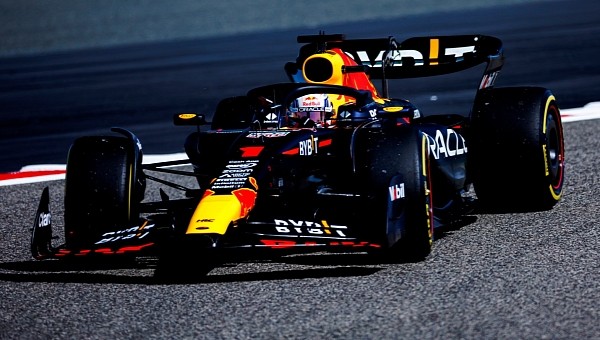We are all familiar will the entire Red Bull cost-cap debacle and its consequences. The Austrian was hit with both a reduction in its budget as well as aero testing restrictions as a result of what the FIA deemed a minor overspend in the 2021 season.
Fans of the team have been on the edge of their seats ever since, waiting to see what that would mean for the RB19 Well, with the Bahrain testing allowing the cars to go on track for the first time before the season start, some things became apparent.
The fact that Max Verstappen happened to top the charts is obviously to be taken with a pinch of salt. At this stage, F1 teams are generally focusing more on sorting out various gremlins rather than showcasing their actual speed and pace. But as the RB19 took a few laps of the Bahrain International Circuit, it gave us a glimpse of the design changes that have been implemented.
The 2023 contender features a drastically increased undercut in the side pod design compared to last year’s car. This choice is complemented by a carefully sculpted aerodynamic shape, which will force higher levels of airflow toward what is commonly called the coke bottle area of the car.
This refinement of the design we’ve already seen in 2022 results in more air being fed into the diffuser. In turn, the diffuser increases the performance coming from the underfloor, which is probably the most important aero element under the new ground-effect regulations.
There is, however, a rule that aims to counteract such gains and states the floor edges have to be situated 15mm higher than last year. But Red Bull combats that with a few aero elements on those edges as well as a change in the front wing, which is more evenly loaded and provides more outwash to the front of the floor.
Another hint that Red Bull took an evolutionary approach rather than an evolutionary one is that the new side pod design could have been made possible by an improvement in the cooling package. If that specific piece of gear can be made smaller, it gives the engineers a lot more wiggle room to optimize airflow over and under the bodywork.
A couple of other features worth pointing out are the more compact engine cover and more aggressively sloped downwash area in the rear of the side pods. The focus on refining what already won Red Bull both championships comes naturally for two reasons.
First, you don’t really need to fix what is not an issue, so there was no real motive to revolutionize the design. More importantly, the team has been hit with restrictions in both budget and aero testing, meaning the engineers had to be extra cautious with all resources.
Overall, Max Verstappen’s faith in the aero team seems to have been rewarded. The RB19 performed well, topping the charts in the first testing session despite Max setting the time in the morning, which is typically slower.
The fact that Max Verstappen happened to top the charts is obviously to be taken with a pinch of salt. At this stage, F1 teams are generally focusing more on sorting out various gremlins rather than showcasing their actual speed and pace. But as the RB19 took a few laps of the Bahrain International Circuit, it gave us a glimpse of the design changes that have been implemented.
The 2023 contender features a drastically increased undercut in the side pod design compared to last year’s car. This choice is complemented by a carefully sculpted aerodynamic shape, which will force higher levels of airflow toward what is commonly called the coke bottle area of the car.
This refinement of the design we’ve already seen in 2022 results in more air being fed into the diffuser. In turn, the diffuser increases the performance coming from the underfloor, which is probably the most important aero element under the new ground-effect regulations.
There is, however, a rule that aims to counteract such gains and states the floor edges have to be situated 15mm higher than last year. But Red Bull combats that with a few aero elements on those edges as well as a change in the front wing, which is more evenly loaded and provides more outwash to the front of the floor.
Another hint that Red Bull took an evolutionary approach rather than an evolutionary one is that the new side pod design could have been made possible by an improvement in the cooling package. If that specific piece of gear can be made smaller, it gives the engineers a lot more wiggle room to optimize airflow over and under the bodywork.
A couple of other features worth pointing out are the more compact engine cover and more aggressively sloped downwash area in the rear of the side pods. The focus on refining what already won Red Bull both championships comes naturally for two reasons.
First, you don’t really need to fix what is not an issue, so there was no real motive to revolutionize the design. More importantly, the team has been hit with restrictions in both budget and aero testing, meaning the engineers had to be extra cautious with all resources.
Overall, Max Verstappen’s faith in the aero team seems to have been rewarded. The RB19 performed well, topping the charts in the first testing session despite Max setting the time in the morning, which is typically slower.









